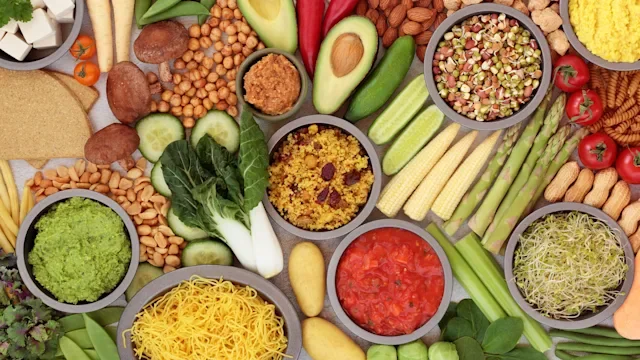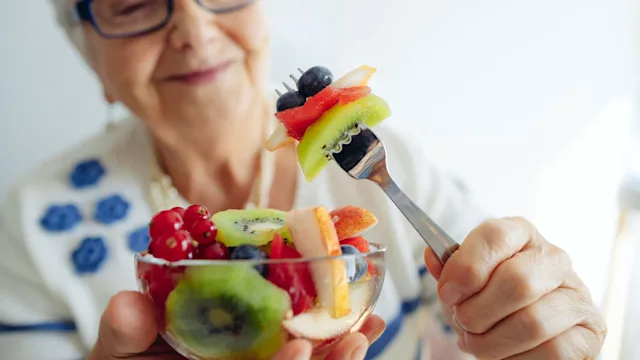Key takeaways:
Food processing plays a vital role in making many foods safe, convenient, and shelf-stable. Almost everything we eat is processed to some degree.
Ultra-processed foods (UPFs) — like packaged snacks, soda, many breakfast cereals, and fast food — have been linked to health conditions, such as obesity, heart disease, and depression.
It’s not always realistic to avoid UPFs entirely, especially when cost, time, and access to fresh ingredients are barriers. But when possible, small swaps toward less-processed options may benefit your health over time.
Ultra-processed foods (UPFs) are everywhere — lining grocery store shelves, filling vending machines, and often offering the most convenient and affordable option during a busy day. In the U.S., they now make up nearly 60% of the average American diet and contribute about 90% of the added sugars we consume.
Processing itself isn’t the enemy. In fact, some level of processing is essential to make food safe to eat and last long enough to get to your plate. But growing research suggests that a high intake of ultra-processed foods may contribute to a range of health concerns.
So what exactly counts as an ultra-processed food — and how is it different from a minimally processed one? Ahead, we’ll break it down, share examples, and offer realistic ways to cut back, if that’s something you want to do.
What does ultra-processed mean?
“Ultra-processed” refers to foods that are the most removed from their natural state. They are food products made from substances extracted from food. This means they are physically and nutritionally very different from whole foods.
Almost all the food we eat is processed to some extent. This means the food is changed from its original state. For example, roasted peanuts, pasteurized milk, or canned fruit are processed foods.
But with ultra-processed foods (UPFs), there are typically many more steps involved. Some processes used to make UPFs include:
Separation of whole foods into individual parts: Sugars, fats, protein, and fiber are isolated from crops like wheat, corn, and soy.
Hydrogenation: This changes the chemical structure of plant oils to help foods have a longer shelf life. But in doing so, the unsaturated or “good” fat gets converted into trans fat (the least healthy type of fat).
Extrusion: Raw ingredients go through a series of processes, including mixing, heating and cooling, and shaping to create uniform pieces.
Inclusion of additives: These include flavors, thickeners, emulsifiers, preservatives, and colorings to improve taste, texture, appearance, and shelf life.
Filippa Juul, PhD, an assistant professor in the Department of Health Policy and Management at SUNY Downstate, studies ultra-processed foods and their effect on health. She said that UPFs are “composed of very highly refined ingredients — they have very little whole foods, and they usually have different sorts of additives.”
Common ultra-processed foods: A list of examples
Here are some examples of common ultra-processed foods:
Sugary drinks: soda, energy drinks, blended coffees
Packaged foods: cookies, crackers, chips, white bread
Sweets and treats: candy, ice cream, chocolate bars
Frozen meals: ready-to-heat foods, such as frozen pizzas, breaded chicken tenders, microwaveable mac and cheese, and TV dinners
Breakfast foods: fruit yogurt, sugary breakfast cereals, flavored instant oatmeal, frozen waffles, breakfast sandwiches, and toaster pastries
Meal replacements: energy bars and protein shakes
Processed meats: chicken and fish nuggets and sticks, sausages, and hot dogs
Processed cheese: American cheese, cheese spreads, and shelf-stable cheese products
How to cut back on ultra-processed foods: Learn simple, doable tips to help reduce ultra-processed foods in your daily meals — without overhauling your whole diet.
Foods that fuel inflammation: From alcohol to trans fats, see which everyday foods may trigger inflammation — and what to eat instead.
How ultra-processed foods affect mental health: Explore the growing link between ultra-processed foods and mental health conditions like depression, anxiety, and dementia.
Minimally processed vs. ultra-processed foods: What’s the difference?
Most food we eat is processed to some degree. But not all processed food is bad for your health. In fact, food processing is an important part of making foods safe, enjoyable to eat, and easy to store and use.
When it comes to health, it’s the degree of processing that makes a difference.
Minimally processed foods go through less processing than other types of processed foods. Examples of minimal processing include:
Drying or dehydrating: This removes moisture and lowers the risk of spoilage from bacteria. Examples include raisins, jerky, and powdered milk.
Boiling: Some vegetables — like beets — are preboiled and then sealed, so that they require less cooking time when opened.
Freezing: Many vegetables and fruits are frozen and packaged so they can be stored in the freezer for long periods of time. Examples include frozen berries, green beans, and spinach.
Grinding: Whole spices, like red chili peppers and black peppercorns, are ground into a powdered form.
Pasteurizing: Dairy products are examples of foods that are pasteurized (heated to kill harmful bacteria that can make you sick).
Refining: This is any process that changes a food to improve its texture and make it more uniform. For example, the bran and germ in refined grains are removed and milled into a flour.
Canning: Beans, coconut milk, and sardines are examples of foods that are available canned. As part of the canning process, foods are heated and sealed to prevent bacterial growth.
Fermenting: In fermentation, yeast or bacteria break down carbohydrates into alcohol and other substances. Examples of fermented foods include pickles, sauerkraut, and kombucha.
Read more like this
Explore these related articles, suggested for readers like you.
Examples of minimally processed foods
Here are some examples of common foods that have been minimally processed:
Fresh and frozen vegetables and fruits
Grains (like rice and wheat berry)
Legumes (like beans and lentils)
Fresh cuts of meat, poultry, and seafood
Butter, lard, and salt
Oils crushed from seeds or fruits, like olive oil
Freshly made unpackaged breads
Fresh cheeses
How to spot ultra-processed foods?
It’s not always easy to tell if a food is ultra-processed.
Some foods — including yogurts, cereals, and breads — can have different levels of processing. For example, a cereal can be minimally processed (plain shredded wheat) or ultra-processed (a sugary breakfast cereal).
Reading the ingredient list on nutrition labels can help if you’re not sure. Here are a few signs that a food is likely ultra-processed:
A long list of ingredients (especially 10+ items)
Ingredients you wouldn’t use at home (like maltodextrin, artificial sweeteners, or protein isolates)
Additives to change texture, color, or shelf life
And beware of marketing: Even foods labeled “natural,” “organic,” or “plant-based” can still be ultra-processed. When in doubt, check the ingredient list — not just the front of the package.
Common ingredients in UPFs
Here are examples of ingredients you might see on the label of an ultra-processed food. Items toward the top of this list are more likely to show up earlier in the ingredients list:
Hydrolyzed proteins and protein isolates, like whey and soy
Hydrogenated or partially hydrogenated oil
Casein
Added sugar like high-fructose corn syrup, maltodextrin, and evaporated cane juice
Natural and artificial flavors (like natural vanilla flavor, grape flavor, or cherry flavor)
Flavor enhancers (like monosodium glutamate or MSG)
Food colors, like red dye 40
Emulsifiers that help stabilize foods, like soy lecithin
Artificial sweeteners, like aspartame or sucralose
Thickeners, like pectin, guar gum, and tapioca starch
Bulking agents, like polydextrose or inulin
Preservatives, like sodium benzoate
Glazing agents that prevent discoloration, like carnauba wax
5 reasons ultra-processed foods are bad for you
Ultra-processed foods can be bad for your health in many ways. This is because they are high in calories, sugar, salt, and unhealthy fats, and low in fiber, vitamins, and nutrients. Let’s take a look at what some of the newest research says about UPFs and health.
1. Effects on your physical health
Diets high in UPFs have been linked to many different chronic health problems. And it doesn’t take a lot. A new study shows that with every 100 g of UPF consumed in a day, the risk of many of these conditions goes up (for reference, an individual bag of chips is about 30 g):
Overweight and obesity
Cancer
2. Effects on your gut
Ultra-processed foods may also change the gut microbiome (the trillions of bacteria living in our intestines) and contribute to inflammation.
For example, some emulsifiers “can affect the gut microbiome very negatively and lead to leaky gut,” Juul said. Leaky gut refers to the idea that your gut lining can become damaged and potentially allow different toxins and bacteria to be absorbed. Researchers are still trying to understand if or how it happens, but some have linked it to a higher risk of developing autoimmune disorders.
3. Effects on eating behaviors
Juul said that several different characteristics of UPFs may cause us to overeat them. Here are some reasons why:
They have high amounts of sugar, salt, fat, and different textures. This can trigger the reward system in our brain, causing us to eat more.
They have been linked to changes in the way people behave around food and to addictive-like eating.
Many of them are soft and easy to chew, making it easy to eat them quickly. This may cause some people to eat more than they intend. Eating quickly has been linked to an increased risk of having extra weight or obesity.
4. Effects on your mental health
More research is showing that eating too many UPFs may have an impact on your mental health.
A review of several small studies showed that consuming high amounts of ultra-processed foods may be linked to an increased risk of developing mental health symptoms, including:
Depression
Anxiety
Increased stress
Alcohol use disorder
5. Effects on your lifespan
A new large study showed that eating too many UPFs may be linked with a shorter lifespan.
According to the study, people who ate high amounts of UPFs — especially processed meats and sugary soft drinks — were 10% more likely to die than those who ate less UPFs. The deaths were most often related to heart disease and diabetes.
Strategies for avoiding ultra-processed foods
Ultra-processed foods are everywhere — and often the most affordable, convenient, and tasty options. That makes them tough to avoid, especially when you're juggling work, family, and a budget. And it’s not always clear what counts as “ultra-processed” in the first place.
The goal isn’t to cut these foods out completely. For most people, that’s not realistic or even necessary. Instead, try to use them more intentionally. Even among ultra-processed foods, there’s a spectrum: A daily sweetened yogurt may be a better option than chips and soda, even though all three are technically ultra-processed.
If you’re looking to cut back, here are some low-stress strategies to get started — without overhauling your entire pantry:
Plan ahead (when you can): Prepping a few meals or snacks can make it easier to skip the packaged convenience foods.
Cook once, eat twice: Make extra portions and store leftovers in the fridge or freezer for busier days.
Swap smartly: Use leftover meats, beans, or roasted veggies in place of deli meats or packaged entrees.
Upgrade your drinks: Flavor water or sparkling water with fresh fruit, herbs, or a splash of citrus instead of soda or sweetened drinks.
Shop the freezer aisle: Frozen fruits and veggies are nutritious, long-lasting, and often cheaper than fresh.
Stock snack options: Keep less-processed snacks on hand like plain nuts, hard-boiled eggs, fruit, roasted chickpeas, or air-popped popcorn.
Focus on what to add, not just what to avoid
Cutting back doesn’t mean you need to eat “perfectly” or give up all your favorites. Try focusing on what you can add:
More whole or minimally processed foods like fruits, vegetables, whole grains, legumes, and simple home-cooked meals
A balance of foods that work for your body and your lifestyle
Occasional UPFs you enjoy, without guilt or shame
It’s not just about nutrition
Ultra-processed foods can also have cultural and emotional meaning — from childhood favorites to convenience meals shared during hard times. Eating these foods doesn’t make you “bad” or unhealthy. It makes you human.
Frequently asked questions
Yes. Studies show that a diet high in UPFs may be associated with faster biologic aging overall. Too much sugar (a main ingredient in UPFs) can also cause premature skin aging. This is because the excess sugar creates advanced glycation end products (AGEs), which can alter the collagen in the skin and lead to wrinkles.
Some UPFs claim to be healthy because they are high in protein. Like other UPFs, it’s best to limit them as much as possible. Some examples of high-protein UPFs include:
Protein bars
Protein shakes
Energy drinks
Yogurt bars
Plant-based milks
Yes. Studies show that a diet high in UPFs may be associated with faster biologic aging overall. Too much sugar (a main ingredient in UPFs) can also cause premature skin aging. This is because the excess sugar creates advanced glycation end products (AGEs), which can alter the collagen in the skin and lead to wrinkles.
Some UPFs claim to be healthy because they are high in protein. Like other UPFs, it’s best to limit them as much as possible. Some examples of high-protein UPFs include:
Protein bars
Protein shakes
Energy drinks
Yogurt bars
Plant-based milks
The bottom line
Most of the food we eat is processed in some way — and that’s not necessarily a bad thing. Processing helps make food safe, affordable, and convenient.
But diets high in ultra-processed foods, which are often packed with added sugars, fats, and artificial ingredients, have been linked to health issues like obesity, diabetes, heart disease, and depression.
While it’s not always realistic to cut these foods out completely, small swaps — like choosing less-processed snacks or adding fresh ingredients to a frozen meal — can make a meaningful difference over time. Aim for balance, and do what works for your time, budget, and lifestyle.

Why trust our experts?


References
American Society for Nutrition. (2024). Intake of ultra-processed foods linked with increased risk of death.
Ayton, A., et al. (2021). Ultra-processed foods and binge eating: A retrospective observational study. Nutrition.
Boyland, J., et al. (2025). Eating ultra-processed foods may harm your health. American College of Cardiology.
Canned Food Alliance. (n.d.). The canning process.
Croker, H. (2022). What is ultra-processed food and should we be worried about it? World Cancer Research Fund International.
Esposito, S., et al. (2024). Ultra-processed food consumption is associated with the acceleration of biological aging in the Moli-sani study. The American Journal of Clinical Nutrition.
Food Safety and Inspection Service. (2024). Shelf-stable food safety. U.S. Department of Agriculture.
Juul, F., et al. (2021). Ultra-processed foods and cardiovascular diseases: Potential mechanisms of action. Advances in Nutrition.
Kharrazian, D., et al. (2023). The relationships between intestinal permeability and target antibodies for a spectrum of autoimmune diseases. International Journal of Molecular Sciences.
Lane, M. M., et al. (2022). Ultra-processed food consumption and mental health: A systematic review and meta-analysis of observational studies. Nutrients.
McHugh, T. (2017). How extrusion shapes food processing. Institute of Food Technologists.
Monteiro, C. A., et al. (2019). Ultra-processed foods, diet quality, and health using the NOVA classification system. Food and Agriculture Organization of the United Nations.
Monteiro, C. A., et al. (2019). Ultra-processed foods: What they are and how to identify them. Public Health Nutrition.
MyPlate. (n.d.). Grains. U.S. Department of Agriculture.
Narula, N., et al. (2021). Association of ultra-processed food intake with risk of inflammatory bowel disease: Prospective cohort study. The BMJ.
Nguyen, H. P., et al. (2015). Sugar sag: Glycation and the role of diet in aging skin. Skin Therapy Letter.
Ohkuma, T., et al. (2015). Association between eating rate and obesity: A systematic review and meta-analysis. International Journal of Obesity.
ScienceDirect. (n.d.). Hydrogenation.
Siena, M. D., et al. (2022). Food emulsifiers and metabolic syndrome: The role of the gut microbiota. Foods.
Song, Z., et al. (2023). Effects of ultra-processed foods on the microbiota-gut-brain axis: The bread-and-butter issue. Food Research International.
Srour, B., et al. (2019). Ultraprocessed food consumption and risk of Type 2 diabetes among participants of the NutriNet-Santé prospective cohort. Journal of the American Medical Association, Internal Medicine.
Steele, E. M., et al. (2016). Ultra-processed foods and added sugars in the US diet: Evidence from a nationally representative cross-sectional study. BMJ Open.
Stribiţcaia, E., et al. (2020). Food texture influences on satiety: Systematic review and meta-analysis. Scientific Reports.
U.S. Food & Drug Administration. (2025). Substances added to food.
















